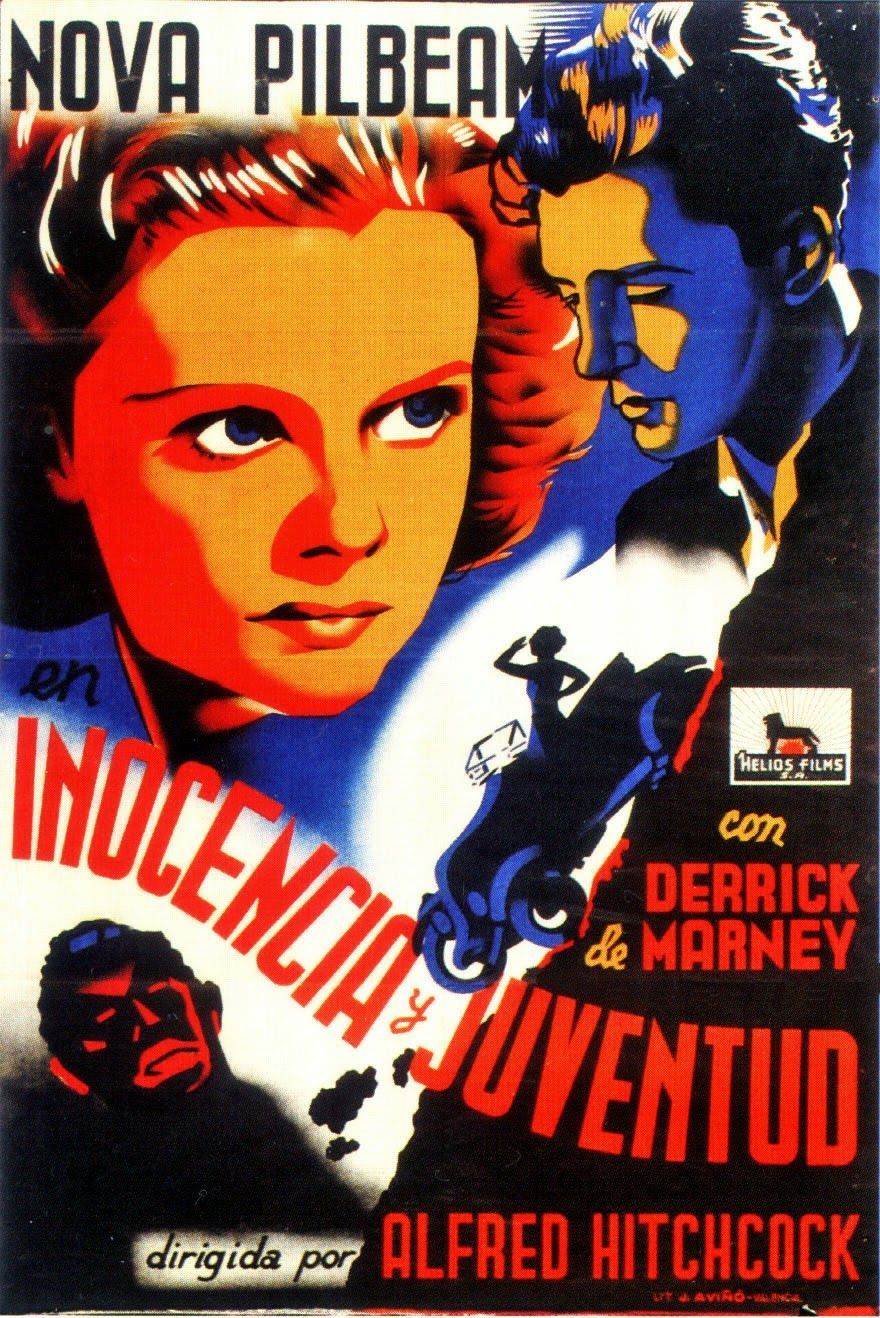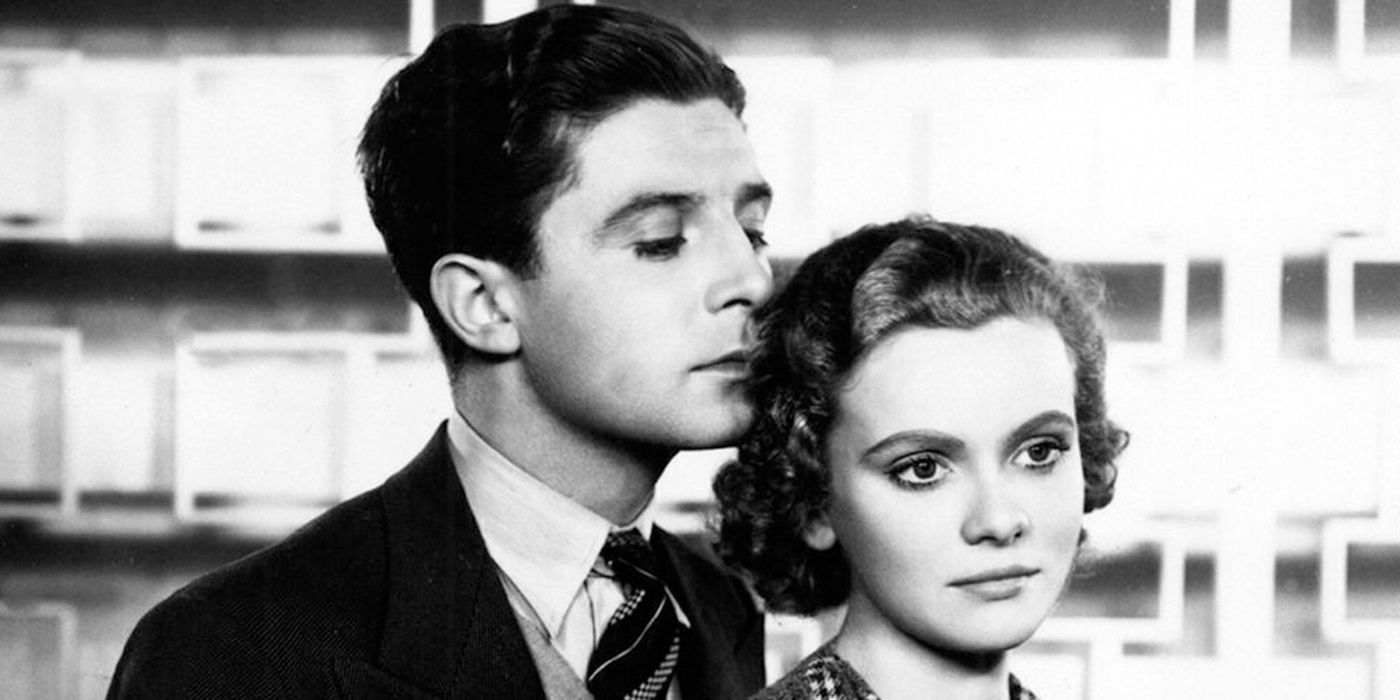The Big Picture
- Surprisingly, lesser-known Alfred Hitchcock films like
Shadow of a Doubt
and Young and Innocent are the only movies from the director to have 100% Rotten Tomatoes scores. -
Young and Innocent
offers a delightful mix of comedy, romance, and suspense typical of Hitchcock’s early British work. - The film showcases Hitchcock’s trademark flourishes and iconic themes, making it a captivating and enjoyable watch even today.
Of the 53 feature films Alfred Hitchcock directed during his career, you might guess that the more famous and so-called “great films” like Psycho, Rear Window, and Vertigo are the highest scoring on Rotten Tomatoes. Surprisingly, only two earlier, relatively unknown titles (neither of them the so-called “great” films), 1943’s Shadow of a Doubt and the more obscure Young and Innocent (made in 1937), have perfect 100% Tomatometer scores from critics. Sample sizes aside, both films are well-made and acted, suspenseful and funny with charm and romance, making them generally enjoyable crowd-pleasers that mostly avoid controversial and polarizing elements. The first (featuring a memorably sinister performance by Joseph Cotton as a charming serial killer) is more frequently viewed and widely known as “Hitchcock’s favorite.”
Of the two, Young and Innocent, is the lesser known but lighter and more easily accessible — a kind of buried treasure. It is a deft mix of comedy, romance, and suspense typical of Hitchcock’s formative British years. It features an appealing lead performance by Derrick De Marney, great twists, and choice early examples of trademark Hitchcockian flourishes. Re-titled The Girl Was Young in America, Young and Innocent is one of Hitchcock’s “wrong man” stories, like the earlier The 39 Steps (1935) and the later North By Northwest (1959). It benefits from Hitchcock’s strong sense of period and place (that of his own childhood) and his fluid camera, allowing much to be conveyed without dialogue.

Young and Innocent
A man on the run from a murder charge enlists the help of a beautiful stranger who must put herself at risk for his cause.
- Actors
- Nova Pilbeam, Derrick De Marney
- Run Time
- 83 minutes
- Director
- Alfred Hitchcock
- Release Date
- February 17, 1938
- Studio
- General Film Distributors
A Hitchcock Heroine Joins the Search for Evidence To Clear an Innocent Man
Young and Innocent unfolds from the point of view of Erica, (played by former child actress Nova Pilbeam), who is visiting her police chief father at the police station and walks in on the suspect just as he faints from exhaustion after all-night interrogation. Her impulse to take charge and render first aid intervenes decisively more than once during the picture. Later, she reluctantly joins the chase (à la The 39 Steps) in a search for evidence (a stolen raincoat with a missing belt) that will free the man, Robert (De Marney), from a wrongful charge of murder. Their journey is filled with humor and irony, accentuating their growing trust and attraction. Additionally, the film features early scenic artwork and (unintentionally funny) miniatures by then 22-year-old Albert Whitlock, working on a budget, who would go on to earn Oscars for his visual effects matte paintings for 1975’s Earthquake and 1985’s The Hindenburg.
‘Young and Innocent’ Is a Hitchcockian Mix of Comedy, Romance and Suspense
In 1937, De Marney was a young-looking 31, and Pilbeam was a much younger-looking 18. Hitchcock had cast Pilbeam to play the kidnapped child in his first version of The Man Who Knew Too Much three years earlier. The thirteen-year age difference between the two principals (though not uncommon in films of the time) is somewhat mollified by De Marney’s relatively youthful manner and, indeed, innocent-seeming demeanor.
The supporting cast is superb, providing master classes in eccentricity and comedic timing. The then fifty-eight-year-old character actor Edward Rigby steals the picture as Will, the homeless pottery mender who can recognize the killer. He is especially hilarious in his ill-fitting tux when he goes undercover with Erica at a hotel tea dance in search of the killer. His jaunty hitch-kick version of a foxtrot is a wonderful comic flourish. J. H. Roberts, an actor in the mold of Franklin Pangborn, plays Robert’s whimsical, over-optimistic, and myopic solicitor in a notably funny scene before the trial. When Robert asks to discuss the case, he answers, “Well, it couldn’t do any actual harm.” Comic veteran Basil Radford and stately Mary Clare, play Erica’s aunt and uncle hosting a birthday party for seven-year-olds (discussed later) as a kind of King and Queen of Hearts at The Mad Tea Party.
By contrast, George Curzon is slick and sinister as the elusive killer in plain sight with the telltale eye twitch. Finally, veteran stage and film actor Percy Marmont adds needed poignance as Erica’s police chief father, torn between his duty and the love of his daughter. Robert and Erica must live by their wits contending with this diverse and eccentric group. The blend of these hilarious characters and the dark murder-based plot is a captivating mix only Hitchcock could have pulled off for a masterful result.
A Nearly Ninety-Year-Old Certified 100% Fresh Red Tomato
After a (thankfully brief) disconcertingly histrionic prelude establishing the victim and killer, viewers are treating to an extended, beautifully done, largely silent beach sequence in which the corpse appears to swim ashore (an image repeated in Frenzy). The protagonist, Robert, finds the body and is seen running from the scene for help by subsequent witnesses — a case of wrong place, wrong time. He is misidentified and promptly arrested, representing what biographer Donald Spoto calls the ever-present “proximity of ruin and chaos” for Hitchcock’s characters in his book The Art of Alfred Hitchcock: Fifty Years of his Films,
In attempting to escape from the police, Erica decides she and Robert should hide out at her aunt’s house in the country. When they arrive, her seven-year-old niece’s birthday party is in full swing, magician and all, and the house full of small children. This scene, adults in party hats and playing children’s games — in both its comedy and suspense — “is the essence of the film,” Hitchcock told François Truffaut in Hitchcock/Truffaut, his acclaimed 1966 book-length interview with the filmmaker. The couple, desperate to escape, are delayed by the relatives, children, party games, and the ritual birthday cake serving, creating suspense based on the audience’s knowledge of the protagonists’ plight being at odds with that of these background characters and their trivial concerns.

Related
Robert Downey Jr. to Lead ‘Vertigo’ Remake From Steven Knight
Steven Knight will write the script for the Hitchcock reboot.
For Hitchcock students, there is a lot here to study. Hitchcock is a filmmaker who repeats himself stylistically and many of his regular archetypical images and tropes appear here for the first time. By the time Young and Innocent is over, multiple Hitchcock symbols — birds, broken teacups and eyeglasses — and devices such as a rescue from the edge of a cliff, a song as a clue, and casual reference to birds “pecking at eyes” will reference numerous others of his films from The 39 Steps to Frenzy. The film also continues the filmmaker’s fascination with playacting and disguise. Robert steals his lawyer’s thick glasses to disguise himself to escape from the courthouse, dressing up as the tramp to get into the hotel, and the hotel band (including the killer) in blackface. The whole thing ends with a deservedly famous and elaborate crane shot from far to near (duplicated later in Notorious) that ends with the unmasking of the nervous killer, undone by his own guilt.
Having first seen Young and Innocent, billed as Jeune et innocent, with a French-speaking audience in a cinema on the Champs Élysée in Paris in 1985, I’ll embarrassingly admit I was often the only person laughing at some of the droll English dialogue which apparently did not translate intact into French subtitles. Nonetheless, it didn’t matter. No subtitles were needed for the brilliant visual storytelling, suspense, and thrills. The audience, me included, was rapt in attention as the central couple were transformed by their experiences from innocent youth to wiser maturity. Their search for evidence had also led to a relationship. The film, almost ninety years old, remains a delightful surprise on first viewing, a repeated guilty pleasure, and a certified 100% Fresh Red Tomato to this day.
Young and Innocent is available to stream on Prime Video in the U.S.
























































![Key Metrics for Social Media Marketing [Infographic] Key Metrics for Social Media Marketing [Infographic]](https://www.socialmediatoday.com/imgproxy/nP1lliSbrTbUmhFV6RdAz9qJZFvsstq3IG6orLUMMls/g:ce/rs:fit:770:435/bG9jYWw6Ly8vZGl2ZWltYWdlL3NvY2lhbF9tZWRpYV9yb2lfaW5vZ3JhcGhpYzIucG5n.webp)
















